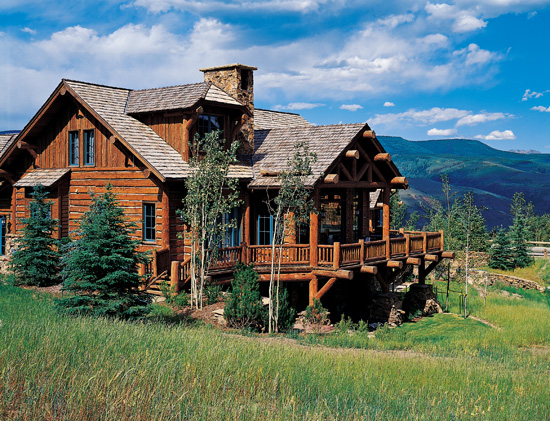Fifteen years ago, the United States was on the cusp of an unprecedented economic era. The country’s budget was balanced; the economy was booming, thanks in large part to the rise of the technology/dot-com sector; stock prices soared; personal disposable income was flowing and consumers spent it freely. Luxury cars, grand homes, you name it—the United States was rich, and we wanted everyone to know it.
Then, in 2001, tragedy struck as we watched the most horrific terrorist attack on American soil unfold. Though 9/11 was extremely tough on the travel and tourism industry, it had an unexpected effect on housing—it caused it to skyrocket. We, as a culture, decided to nest. Since traveling was deemed “unsafe,” we decided to invest everything we had into making our homes as luxurious and extravagant as a five-star getaway. The concept of the “staycation” was born. Existing homes were selling for far above typical value and, in some areas, within hours of being placed on the market. New construction was popping up all over, as people were eager to design and build their dream homes. Feeding into this frenzy was the fact that financing was easier to get than ever before. No down payment? No problem! Well, as we now know, there was a problem. This culture couldn’t be sustained and sadly, many homeowners (and banks) got in over their heads. In 2006, the bubble burst, and the housing industry has been feeling the deflating effects ever since.
Now you’re probably thinking, “Tell me something I don’t know,” right? Well, how about this: For years, log home magazines have been preaching that the biggest place you can save money on your log home is by serving as your own general contractor—that’s no longer true. Actually, fewer people are building their own log homes today than they were 10 to 15 years ago, even though a general contractor’s fees typically range between 15 and 20 percent of the total value of the home. On a $250,000 house, that’s $50K that could be saved. So why, in this era of coupon clipping and penny pinching, aren’t more log home buyers picking up hammer and saw and doing it themselves? It’s not for lack of desire. The reality is, they’re not allowed, and it’s the financing industry that’s putting the hammer down.
This isn’t an isolated or regional trend. Mark Feder, vice president of sales for Appalachian Log Structures headquartered in West Virginia; John Batzer, the director for dealer development for Wisconsin’s Golden Eagle Log Homes; and Jack Mundy, Pennsylvania-based Estemerwalt Log Homes’ director of sales, all articulated the same sentiment—unless you have or are a professional, experienced general contractor (GC), you’ll be hard-pressed to secure financing with a bank if you try to act as your own. Lenders are demanding that homeowners work with a veteran builder who knows how to properly schedule the subcontractors, monitor the job, and get it done on time and within budget. They’re no longer willing to take a chance on the homeowner GC. Some specialized lenders, such as American Log Mortgage, who are intimately familiar with log home financing and draw schedules may still allow it, but these kinds of institutions are getting harder and harder to find. Right now, Jack has about six homeowner-run projects in his queue, but all of them are 100 percent homeowner funded with no bank involvement whatsoever. And Mark says that in 2010, less than 15 percent of their home sales were DIY projects, as opposed to 30 percent just five years ago, primarily as a result of the lending climate.
Before you get too frustrated thinking about the savings you think you could have by acting as your own GC, consider this: Even though a GC’s fee may equal 15 percent of the total value of your home, if you serve as your own, the chances of your actually saving that much aren’t very good. “The typical homeowner GC is lucky if he or she saves 5 percent,” according to John Batzer. “Subcontractors generally charge a homeowner GC more than they do a professional, because of the efficiency factor. They assume a homeowner will make scheduling mistakes that will ultimately affect the sub’s time onsite, and they factor that into the price,” he explains. Plus, subcontractors know that they are not going to get ongoing business from an individual homeowner, like they would from a professional contractor, so they don’t have as much incentive to do the job expediently or inexpensively.
Another factor to consider is the time investment that’s required in home construction. Not only will the bank expect that the home be move-in ready within a certain time period (often six months to a year), building permits have a shelf life, too. Just how long depends on where you’re building. Communities or log home developments may want your home to be completed inside a year, whereas if you’re building in a rural area, you may get longer to finish the job. Building a home is a full-time job, so unless you’re in a position to take time off from yours, finding the balance between work and building your home can be tough.
In Mark Feder’s opinion, enlisting a professional GC is money well spent. “You want to get your home dried-in as quickly as possible, so that the materials are protected and installed correctly,” he explains. This means that the log shell is fully erected and the roof, windows, and doors are in place. Jack Mundy agrees. “An 1,800- to 2,200-square-foot home would take a GC about 30 days to dry in. It takes the typical homeowner GC twice as long— maybe longer—depending on his or her skill level.”
The expertise of a professional GC also is invaluable when it comes to knowing what permits have to be pulled, ensuring property easements are accounted for, and that the job is scheduled accurately and efficiently. Jack explains it this way: “If you have a heart condition, you wouldn’t trust the operation to anyone other than a cardiac surgeon. A homeowner may be great at his or her profession, but that doesn’t mean he or she is the most qualified person to build a house.” And when the financial investment is this sizeable, you want it done right.

With all this said, there are plenty of ways you can contribute to your home’s construction and save some money. The place to save is on labor costs, and Jack, Mark, and John all suggest interior-finishing work as an ideal place for homeowners to start. “Snap-in-place laminate wood flooring, paneling, painting, staining—even trim work, if you’re handy with wood—are all areas that are easy for the DIY homeowner to tackle and save,” says Mark, though John cautions homeowners when it comes to staining.
Whether it’s staining, tongue-in-groove, or insulation, Jack offers the DIYer this piece of advice: Stay close to the ground. “Let the experts do the high stuff,” he says. “They have the right scaffolding and equipment, not to mention insurance, to do it safely. Flooring, tiling, cabinet installation—these are all good homeowner projects that will save a decent sum. For example, laminate wood flooring typically costs an average of $10 to 12 per square foot for professional installation, and it’s a job that’s not too hard for homeowners to do themselves.” And, if you really want to help out and save a few bucks, Jack knows the perfect place for you to pitch in. “Clean up the job site at the end of each day. It may seem silly, but it has to be done and it’s a job that anyone can do. It’s quick, it’s easy, and it will save you money.”
John fully understands homeowners’ desire to help build or finish their homes themselves. It takes time and determination, but it’s extremely rewarding. “When my wife and I built our home 13 years ago, it was challenging. There are some things we’d do differently and, in hindsight, there are some things we wouldn’t do ourselves at all. But the satisfaction of being able to say ‘we did it’ can never be replaced, and the memories we built during the process … well, we’d never trade those for anything.”

